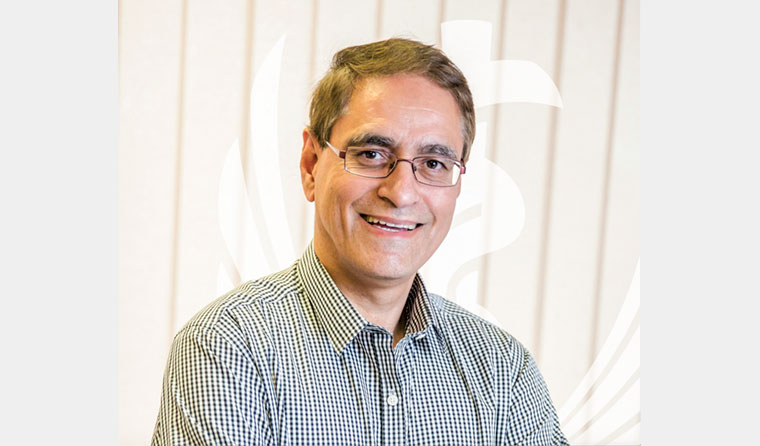News
Questions emerge regarding new SA bid to ease ED strain
Ambulances have begun taking some patients to GP-led priority care centres in an effort to relieve Adelaide’s strained hospital network.
 Ambulances will be used to take patients to new priority centres. (Image: David Mariuz)
Ambulances will be used to take patients to new priority centres. (Image: David Mariuz)
Patients with simple fractures, cuts and abrasions, sports injuries and respiratory-tract infections will be among those who may be taken to the new priority care centres instead of overcrowded emergency departments (EDs), as part of a new South Australian trial.
The clinical decision to recommend patients go to the new centres – based in GP clinics – rather than EDs will be made by the attending ambulance paramedic in consultation with a senior medical officer in the call centre.
But RACGP SA&NT Chair, Dr Zakaria Baig, told newsGP he feels the 16-week trial will be challenged by funding issues and duplication of existing GP services.
The SA model is understood to be loosely based on Western Australia’s urgent care clinics, which the RACGP has previously questioned.
The state is grappling with an overcrowding crisis in its hospitals which has at times forced the government to seek beds in private hospitals.
Three priority care centres are now open in Hindmarsh and Hackham, with a final centre to open tomorrow in Noarlunga. The centres are based at large existing GP clinics – Hackham Medical Centre, Hindmarsh Boden Health Group, Elizabeth Medical and Dental Clinic, and McIntyre Medical Centre.
Dr Baig questioned why the RACGP had not been not consulted early in the process, despite the fact the pilot relies on GPs.
He also cast doubt on the trial’s viability and suggested it is akin to reinventing the wheel, given Adelaide already has at least six large bulk-billing GP clinics open between 7.00 am and 10.00 pm with in-house pathology and radiology.
‘Many surgeries enrolled but pulled out in the end, [citing] lack of funding to support such services as the main reason,’ he said.
‘[The] government expected GPs to deliver such a demanding service based on existing fee structures. No new item numbers are available for GPs to access to provide such services.
‘GPs are not happy with this.’
 RACGP SA&NT Chair Dr Zakaria Baig questioned why the RACGP had not been not consulted early in the process, despite the fact the pilot relies on GPs.
RACGP SA&NT Chair Dr Zakaria Baig questioned why the RACGP had not been not consulted early in the process, despite the fact the pilot relies on GPs.
But Dr Baig said he understands the government has now taken RACGP feedback on board.
State Health Minister Stephen Wade said that eligible patients ‘may be encouraged to attend, or taken to, one of the priority care centres.’
‘Reducing the numbers of less-urgent presentations in our [EDs] will reduce stress on our hospitals, increase the availability of ambulances in the community and aid a more efficient flow for hospital admissions,’ he said.
Wellbeing SA CEO Lyn Dean said patients requiring urgent care could choose to either attend a priority care centre or wait at an ED.
‘If patients elect to be seen at one of the four centres, they will still be able to access an [ED] should they change their mind, or if there is a change in their condition,’ she said.
‘While we are moving focus from hospitals to alternative, but appropriate, community care, patients will always be assessed to ensure they are receiving quality care and access to the services they need.’
The program is the first delivered by Wellbeing SA, a new agency within SA Health intended to boost preventive health and reduce hospitalisations.
newsGP understands an ED nurse will be present at each centre, with the ability to admit the patient to hospital if required.
The SA Government expects that up to 90% of patients will be able to be sent home after treatment, rather than being sent to hospital. Discharged patients will be given a summary as well as a My Health Record shared health summary (if they have an account).
Patients will be transported to the new centres by ambulance if coming from home. ED walk-ins referred to the priority care centres may have to use a taxi or use their own transport, though treatment will remain free.
In a public summary of questions and answers about the trial, SA Health said it would not offer incentives for GPs to work extended hours, but it would develop a new service model that might involve compensating GP clinics for ‘non-MBS-related costs and expenses’ incurred by the trial.
newsGP understands the funding details are commercial in confidence.
One person questioned how long SA Health would support the trial given other projects had been ‘suddenly stopped’ in the past. In response, SA Health wrote that ‘if successful, SA Health [intends] to continue this model of care’.
The State Government earlier this year rolled out an awareness campaign in a bid to redirect younger patients with lower-urgency issues to GPs rather than EDs.
The priority care centre locations were selected as areas where large numbers of patients come to hospital ED with lower-urgency (triage category 4 and 5) complaints that could be tackled in primary care.
Patient numbers expected during the trial are relatively low, at around 16 per day, to allow the clinics to keep seeing their regular patients.
The centres selected have multiple treatment rooms, ambulance entrances, a nursing station and gurneys, with imaging, pathology and pharmacy services either at the clinic or close by.
Open from 10.00 am – 6.00 pm, the new centres will accept SA Ambulance patients with non-life-threatening injuries and illnesses who have been assessed as being clinically stable and not in need of emergency care.
primary care South Australia urgent care
newsGP weekly poll
As a GP, do you use any resources or visit a healthcare professional to support your own mental health and wellbeing?